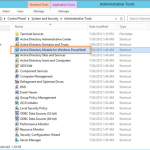When properties sit vacant, they often catch the attention of squatters. While some may assume that dealing with a squatter situation is rare or a long-term issue, the reality of squatters’ rights 30 days wisconsin makes acting fast crucial for property owners. With trends showing rising numbers of vacant homes and increased awareness of adverse possession laws, understanding the importance of Wisconsin’s legal timelines can have a direct financial and legal impact. This blog dissects the benefits of knowing and acting quickly on squatters’ rights, backed by relevant statistics and the latest trends.
The 30-Day Rule in Wisconsin: What Does It Mean?
Wisconsin, like several states, recognizes squatters’ rights under certain conditions. Most notably, if someone occupies a property continuously for 30 days without the owner’s permission, specific legal protections may be triggered. This 30-day window is far shorter than what some might expect, making timely response essential.
The law’s design is based on adverse possession. After the 30-day threshold, a squatter may have limited rights, and the property owner’s ability to remove them without a formal eviction process decreases. This critical window is the property owner’s best opportunity to regain control efficiently and prevent a potentially costly, drawn-out legal process.
Why Knowledge is Power for Property Owners
Protecting Property Value
Statistics show that properties subjected to squatting can drop in value by up to 20%, according to industry analyses of similar property disputes. When a property sits vacant—even for just a month—it can quickly attract squatters, making it susceptible to neglect, vandalism, or illegal occupation.
Timely intervention within the 30-day window means a higher likelihood of swift resolution. This proactive approach prevents visible neglect and secures the property’s integrity before any substantial damage can occur.
Reducing Legal Complexity
The legal process for removing squatters intensifies after 30 days of continuous, unauthorized occupancy. Eviction can transition from a straightforward process to a complex legal battle requiring court intervention and potentially months of litigation. Data from housing courts in Wisconsin indicate eviction cases involving adverse possession claims take an average of three to six months to resolve, compared to just two to four weeks for timely responses within the 30-day period.
Acting within the first 30 days significantly lowers legal costs and reduces exposure to prolonged disputes. It also helps avoid situations where squatters might claim tenant rights or negotiate for compensation to vacate the property.
Minimizing Financial Loss
Vacant properties are already a liability, often costing owners in maintenance and insurance. Each additional day a squatter remains on-site increases the risk of unpaid utility bills, unapproved renovations, or potential hazards. Once that 30-day squatter’s rights threshold is crossed, some insurance companies may limit coverage for claims related to vandalism or property damage, seeing it as preventable.
Owners who intervene within those first 30 days typically spend less on repairs, legal fees, and other recovery costs. Quick action protects rental income streams, resale value, and ongoing investments.
Trending Challenges and Benefits
Wisconsin’s Housing Trends
Recent housing reports highlight a slight uptick in vacancy rates across Wisconsin cities, attributed to shifting economic factors and population changes. With the increase in remote work, some neighborhoods report vacancies as high as 10%. As trends in urban migration fluctuate, property management teams have flagged a corresponding spike in squatter incidents.










